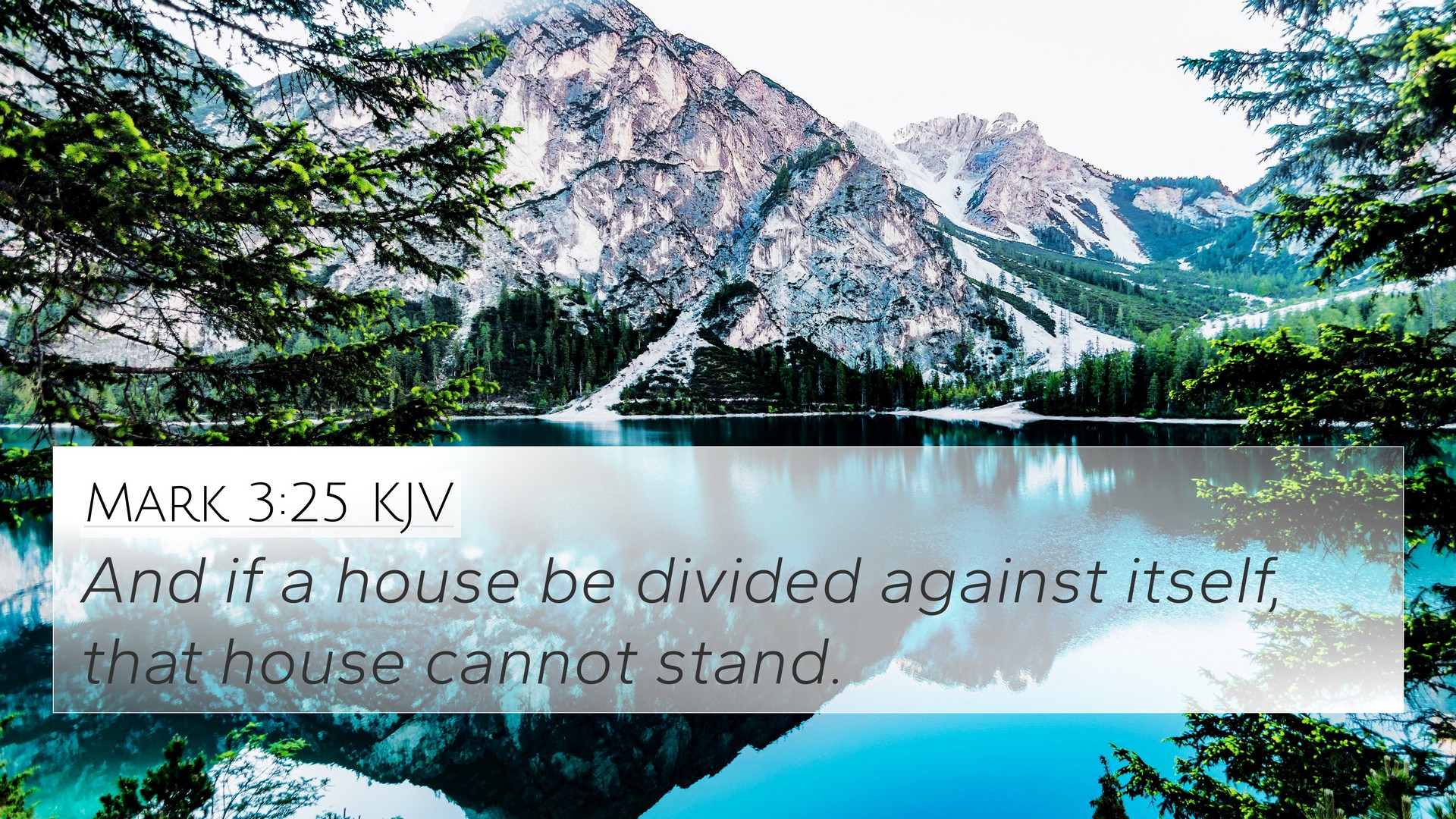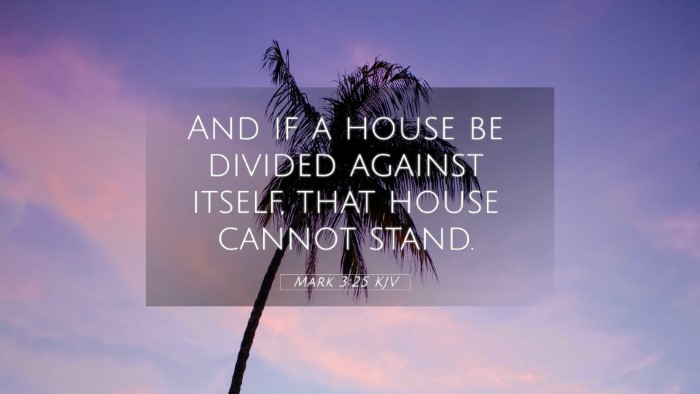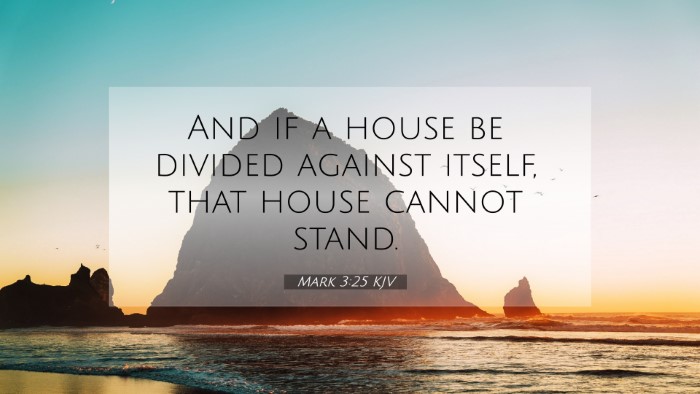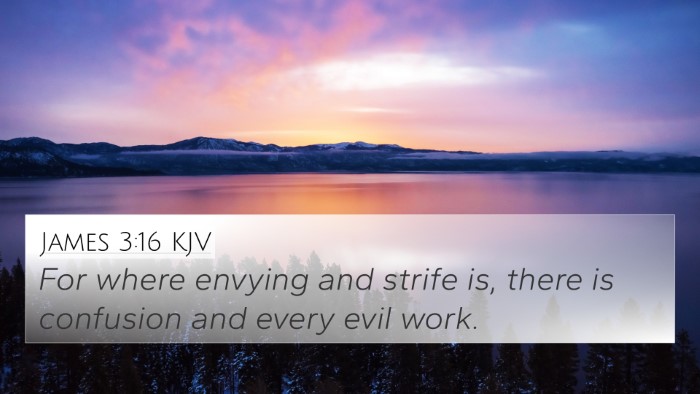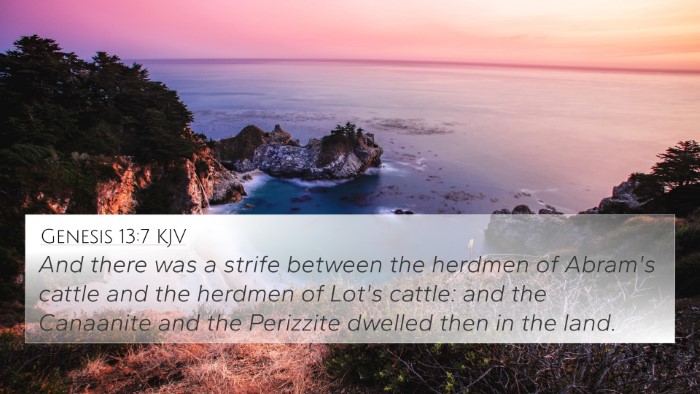Understanding Mark 3:25
Verse Reference: Mark 3:25 - "And if a house be divided against itself, that house cannot stand."
This verse from the Gospel of Mark captures a critical principle about unity and division. It illustrates how disunity can lead to destruction, not just in families or homes, but in broader contexts such as communities and churches.
Contextual Analysis
Mark 3:25 appears during a confrontation between Jesus and the Pharisees. They accused Jesus of casting out demons by the power of Beelzebub, demonstrating their misunderstanding of His divine mission. Jesus uses this analogy of a divided house to highlight the illogical nature of their claims and to explain the destructive consequences of division.
Insights from Commentaries
Matthew Henry's Commentary
Matthew Henry emphasizes the futility of internal strife. He notes that the house mentioned symbolizes any organization or group. If members of the same body or community fight amongst themselves, they weaken their fundamental structure. The ultimate message is the call for unity and the dangers of factionalism.
Albert Barnes' Notes
Albert Barnes elaborates on the implications of the verse. He states that the spiritual warfare between light and darkness cannot be truly effective if there is division among believers. He posits that this verse serves as a reminder that conflict within a group leads to its downfall and that unity in Christ is essential for strength and perseverance.
Adam Clarke's Commentary
Adam Clarke connects the verse to broader themes within Scripture. He points out that the idea of a divided house is echoed throughout the Bible, wherein God's people are called to unity. Clarke notes how this principle is crucial in understanding the collective strength of the Church and the necessity of harmony among its members.
Scriptural Cross-References
Mark 3:25 connects with various other verses that address unity, division, and the consequences of discord:
- Matthew 12:25: Similar caution regarding internal division in the context of demon expulsion.
- Luke 11:17: A parallel account affirming the message of unity and the consequences of division.
- 1 Corinthians 1:10: Paul's call for unity among the believers, discouraging divisions.
- Galatians 5:15: Warning against biting and devouring one another, which leads to destruction.
- Ephesians 4:3: Exhortation towards the unity of the Spirit in the bond of peace.
- James 3:16: A connection between strife and chaos arising from jealousy and selfishness.
- Philippians 2:2: Paul encourages unity, urging believers to be of the same mind and spirit.
Thematic Bible Verse Connections
The message of Mark 3:25 resonates within a larger biblical framework dealing with community, belonging, and relational dynamics. These verses not only reflect the need for unity but also illustrate the detrimental effects of division in spiritual and physical realms.
Identifying Connections Between Old and New Testament
The theme of unity can be traced throughout the Bible, from the Old Testament, where God often calls His people to oneness, to the New Testament, where Jesus and the apostles emphasize this in their teachings. The unity of God's people is essential for living out His mission in the world.
Practical Application
This verse serves as a powerful reminder for Christians today: in all spheres of life, whether at home, in the workplace, or in church communities, division can lead to failure. The call to actively pursue unity and harmony among believers is vital for the health of the Church and the effectiveness of its mission.
Conclusion
Understanding Mark 3:25 provides a profound insight into the necessity of unity in any community, particularly in the body of Christ. Utilizing tools for Bible cross-referencing can shed light on how this principle is consistently reflected throughout Scripture, enabling believers to engage in deeper study and application of God's Word in their lives.
